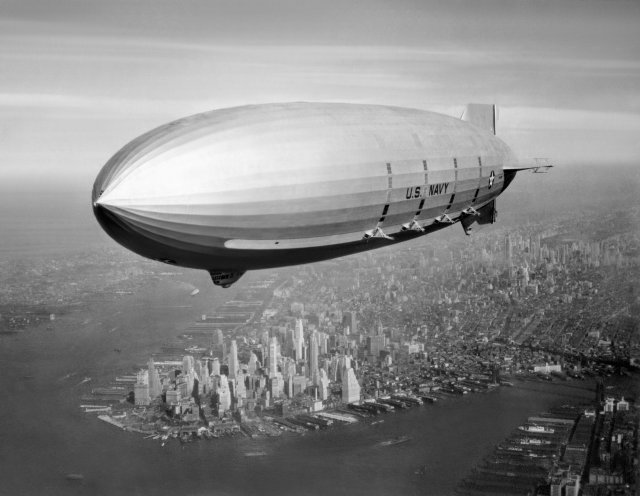 Off the California coast lies the sunken wreckage of the U.S. Navy’s last flying aircraft carrier. The idea that the Navy had flying aircraft carriers is probably new to a lot of people. Imagine a nearly 800-foot “blimp” where five military airplanes can land and take off in midair.
Off the California coast lies the sunken wreckage of the U.S. Navy’s last flying aircraft carrier. The idea that the Navy had flying aircraft carriers is probably new to a lot of people. Imagine a nearly 800-foot “blimp” where five military airplanes can land and take off in midair.
Last week, a team of oceanographers got a close look at the airship USS Macon. More than 1,400 feet under the sea, robots from the exploration ship E/V Nautilus examined the Macon with cameras and other equipment.
The Macon — technically not a blimp, but a rigid airship — crashed into the water off Point Sur during a storm in 1935, killing two of its 83 crewmen. Outfitted with four deployable Sparrowhawk biplanes, it was the last of its kind in the U.S. military.
The crash spelled the end of the U.S. military’s flying aircraft carrier program.
Nonetheless, magnificent floating airships have “remained in the collective consciousness partially because of the popularity of sci-fi and things like the ‘steam punk’ revival,” said aviation archaeologist Megan Lickliter-Mundon, who took part in the underwater mission from the surface.
“When we first got down to the site — about 900 meters away — I can’t really describe the excitement of watching the screen and waiting to see what’s going to come out of the blue at you.”
Soon the wreckage came into view, including parts of the airplanes. “It looked like two tubes — one was pointing down and one was up. And I said, ‘What is that?’ Soon it became obvious the tubes were remnants of a wing, wreckage from an airplane engine and a propeller.”
“I was shocked — really, kind of saddened” that there was so much damage, she said.
The airship’s “biplane No. 1” is the most intact, she said. The U.S. Navy emblem is still legible on it.
The wreckage was first discovered in 1990, when experts were able to photograph it for the first time. In 2006, another expedition got a look at it. Last week’s mission gathered even more images that will allow scientists to evaluate its deterioration. They’re hoping to create a 3-D model of the wreckage site.
Lickliter-Mundon and other aviation archaeologists want to know more about the Macon’s hangar system.
When a plane would approach, a trapeze would lower from a hangar inside the belly of the airship, said aviation historian Dan Grossman of Airships.net. The plane would fly to a metal bar hanging down from the trapeze and attach to it by a hook on top of the plane. The plane would then be raised into a T-shaped hole in the belly of the airship. Then, inside, a crane would move the plane to its storage place.
Sadly, the Macon will remain on the ocean floor forever, Lickliter-Mundon said. Trying to safely bring what’s left of it to the surface would be too expensive and time-consuming.
It’s hard to know how these kinds of aircraft would have performed if the Navy hadn’t shut down the program. Some people wonder if they could have changed history.
“There are a lot of people who argue that these kinds of airships might have been able to warn the Navy about the Japanese fleet that attacked Pearl Harbor,” said Grossman. “Instead of it being a surprise attack, America would have been able to take appropriate defensive measures.”
What about the future? Will the U.S. ever consider new airborne aircraft carriers? The Pentagon apparently isn’t ruling it out.
Last year, the Pentagon’s research arm asked for ideas about carriers that would launch and recover unmanned aerial systems…
To see CNN report, click here.
Source: CNN
